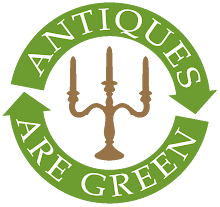 ...and I inadvertently saved the best for last. Before I travel anywhere, I always spend an evening trawling the web for places to visit. This time I found a new gallery, Gallery 567 on Benczur Utca, which I hadn't come across before and looked right up my street. Open by appointment only, it's well worth waiting for and I really can't recommend a visit enough.
...and I inadvertently saved the best for last. Before I travel anywhere, I always spend an evening trawling the web for places to visit. This time I found a new gallery, Gallery 567 on Benczur Utca, which I hadn't come across before and looked right up my street. Open by appointment only, it's well worth waiting for and I really can't recommend a visit enough.The owner, Peter Langh, is the perfect combination of charm, knowledge and experience. And as we know, collecting is a disease (albeit a nice one!), and Peter has it bad! He started collecting seven years ago and has built what has to be the best collection of postwar Hungarian ceramics, glass and furniture in the country, which is augmented by examples from Czechoslovakia, Poland and other old Eastern Bloc countries. Backing this up is a huge reference library, and Peter sure knows his stuff.
 I spent nearly three hours browsing thought his vast basement emporium, even purchasing a piece or two that I need to hit my own library to research. Exciting stuff!
I spent nearly three hours browsing thought his vast basement emporium, even purchasing a piece or two that I need to hit my own library to research. Exciting stuff!Walking back up into the sun after an enormously enjoyable and educational experience, my stomach began to rumble. The only solution was to take advantage of the special brunch at Hungary's top restaurant Gundl, which was thankfully only mere minutes away on foot. Usually out of my price range, this 'eat as much as you would like to' buffet is both a bargain and entirely delicious, and even comes with a complimentary glass of champagne.
 A couple of relaxing hours later, the banker and I decided to pop next door to Budapest's recently re-invigorated zoo. Although the animals are naturally an attraction, design and architecture lovers will love the elephant house and a couple of other truly fabulous Art Nouveau buildings, such as the gatehouse. Cool collectables, fabulous food and amazing animals - what a way to end a long weekend in Budapest.
A couple of relaxing hours later, the banker and I decided to pop next door to Budapest's recently re-invigorated zoo. Although the animals are naturally an attraction, design and architecture lovers will love the elephant house and a couple of other truly fabulous Art Nouveau buildings, such as the gatehouse. Cool collectables, fabulous food and amazing animals - what a way to end a long weekend in Budapest.










.png)